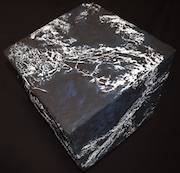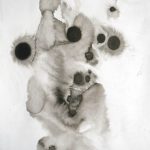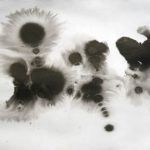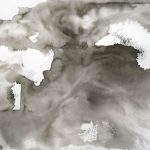Interview with Robert Rich for Projekt Festival Program, Summer 1997
questioning by Dave Aftandilian
1) Can you tell us a bit about your musical history? When did you start making music, and what drew you to it? RR: I started playing my own music when I was about 13, improvising on my parents’ piano. Before that I had sung in a choir and taken some viola lessons, but I wasn’t motivated until I started improvising. I was drawn primarily to music with a trancey intensity, and I would listen to it late at night with my eyes closed, exploring the worlds inside my head. I discovered electronic music around that time (1976) and realized that was where I wanted to go, so I began building a modular synthesizer from kits. By the time I was around 16, I was into experimental and industrial music, and started a band with Rick Davies, who had just come to California from England. We sounded a bit like a hybrid of Throbbing Gristle and Fripp & Eno, only much worse! Between various misguided attempts at playing in bands, I recorded my first solo album in 1981 and began to do all-night concerts. I continued to play in bands as a fun sideline while I focussed most of my energy on school and my solo carreer. (Happily, Rick and I are playing together again as Amoeba.)
2) What would you cite as some of the major influences on your music over the years? I’m interested in other musicians, but I’d also like to hear about non-musical influences. Any artists or writers or filmmakers you particularly enjoy? What do you like most about their work? [prompt: Dali, Gaudi, Olaf Stapledon, Andrei Tarkovsky…others, please, too!]
RR: I can’t begin to list everyone. What they all have in common is a certain ineffable “interior” quality, a sort of intensity that takes you inside the depths of “self” and connects you with something universal. Musically, I am especially drawn to Indian, Arabic, Javanese, Western minimalism, some psychedelic pop and electronic music; graphically, the surrealists, perhaps Yves Tanguy and Max Ernst even above Dali (if you want to visualize ‘glurp’ just look at a Tanguy painting!); films like Tarkovsky’s “The Sacrifice,” Peter Weir’s “The Last Wave,” Cocteau’s “Testament of Orpheus” or Bergman’s “The Seventh Seal.” My favorite writers include J.G. Ballard, Olaf Stapledon, Gabriel Garcia Marquez, and above all Jorge Luis Borges. With his simple little short stories, Borges plants seeds in the reader’s mind, which continue to grow and expand until they become complete forests in your imagination. This, for me, is the mark of the best creative work: it exercises our faculties of perception, it weaves a spell, it asks more questions than it answers, it invites us to participate, and it leaves us feeling awe and wonder. Rather than trying to preach some received Truth, it triggers us to search within and reminds us of truths forgotten.
3) Many natural settings seem to find expression in your work–Rainforest is an obvious one, but two pieces from Fissures (with Alio Die) bring to mind natural scenes to me as well, oceans (“A Canopy of Shivers”) and caves (“Mycelia”). Do you find any natural areas or creatures particularly inspiring?
RR: In general I find the works of nature more inspiring than the works of humans. Some of my favorite places are small, intimate, endowed with a certain energy. The word “numen” describes this energy of a place. When Stefano Musso and I were recording Fissures, I was living near Big Sur, in a forest on the Pacific Coast. It was a warm wet November, and we took breaks from recording to go mushroom hunting in the woods. Above a lake we found a valley with an abundance of porcini, huge and delicious. The lake was full of fish, and on a hillside nearby grew miner’s lettuce. On other days we fished in the ocean for eels and rock cod, or collected mussels at low tide. We ate like this for a month while we worked on the album, cooking meals together with wild food. To feel the depth of this gift, to reconnecect to the world, to take it inside of our bodies and make it ourselves… it’s a real awakening, like remembering for the first time in your life why you exist. I think the gentleness of the music on Fissures reflects these experiences.
4) Despite the electronics you use, your work has always struck me as very organic-sounding–very much alive, liquid, shifting underfoot and overhead. Sometimes your synths almost seem to bubble, like lava or air rising from underwater. Do you feel a dichotomy or tension between the organic beings that create and experience music and the machinery/electronics through which most music is played and transmitted today? Where do the many acoustic instruments that you play–flutes, guitars, dulcimer, and percussion–fit into this?
RR: Humans are tool-using animals, and it’s important that we keep the keep the tools subordinate to our creative or aesthetic needs. Life comes first, and the technology serves life. If technology doesn’t serve an organic cause, then we are misusing it by constraining our consciousness to suit the rigid dictates of inopropriate tools.
So I prefer to use technology in a way that expands the sonic range of organic sounds without imprisoning the music in a rigid electronic framework. I like the expressive, complex timbres of the acoustic instruments, but I like the expanded soundspace and mutational possibilities of the electronics. They compliment each other well, and hopefully the result is mutilayered and psychoactive.
5) How do you go about composing a piece? Do you start with a particular sample or rhythm and build from there? Or does it begin with a vision, or an emotion? Or all of these?
RR: It depends on the piece. Sometimes I’ll start with a sonic experiment: creating feedback loops, mangling an audio file on the computer, scraping pieces of metal together. The resulting sound might suggest a new direction. many of the pieces on A Troubled Resting Place began this way. Other times, I have a landscape in my head, a Gestalt, an abstract place or feeling where I want the music to take me; then I spend weeks trying to shape sounds to create the reality.
6) One of the things I’ve always admired most about your music is your openness to a wide variety of styles, from Indian ragas to Indonesian gamelan to the organic electronics of Brian Eno and the early industrial of Throbbing Gristle. And your recent work with Lustmord and Alio Die has brought you deeper into the dark ambient realm, and to the Projekt Festival. Do you see yourself doing more dark ambient work in the future?
RR: If you are familiar with Trances & Drones, the Sleep Concerts, or my other work from the early 1980’s, you’ll see that this slow deep music is home turf for me. However, I’m inquisitive and restless. I don’t like to repeat myself stylistically, and I enjoy learning and discovering new musical territory. I’m simply seeking music that rewires my neurons in a certain inexplicable way, and I don’t care about boundaries.
7) Many people fear the dark–both the intense emotions associated with it (fear of death) and the dislocated, drifting feeling it can induce. How do you feel darkness fits into your music?
RR: Darkness is part of a complete fabric that also includes beauty. The two are linked and intertwined. Beauty without shadows is insipid. How can we possibly appreciate the gift of life if we deny the reality of death? Our short time on this world makes everything more poignant. Regarding that “dislocated drifting feeling” – it’s at the very core of my music. Perhaps if someone fears it, they fear themselves. But I find when we look inside we find far more than ourselves, we find connection. This strikes me as something to desire, not something to run away from.
8) In addition to your solo work, you have done a number of large-scale collaborations over the years with an extremely diverse range of musicians–from tribal ambient guru Steve Roach (Strata; SoMA) to Indian sarode player Lisa Moscow (Yearning) to depth industrial master Lustmord (Stalker) to your just-released dark ambient album with Alio Die (Fissures). And of course there’s your continuing work with the art-rock ensemble Amoeba. What do you find most rewarding about collaborative work? Most frustrating? Any memorable moments you’d like to share from collaborations past or present?
RR: Collaborations are an absolute requirement for creative health! Not only do they bring fresh energy to the music, but they bond friendships and build a community. Inevitably, collaborators must overcome their attatchment to ideas, and this can be frustrating when it proves difficult, but the results are usually worth the effort. Steve and I had so many great moments when recording Strata and SoMA, both in and out of the studio. It cemented our friendship forever. I still have a piece of paper stuck to the inside of a road case that reads “As Real as it Gets,” the punchline of an ongoing joke of ours while we recorded Strata. He stuck it onto the lid when I wasn’t around, and it reminds me of Mexican food to this day. Brian Williams is also a pleasure to work with. Listeners might never guess that Stalker was so much fun to record. It’s filled with little auditory riddles, sounds with hidden stories that wouldn’t have much meaning to anyone but us. Amoeba is a special case, since Rick Davies and I have been best friends for 18 years now. We’ve played together off and on since I was 15, and the new Amoeba CD Watchful is the best thing we’ve ever done together. We hope to record a sequel next year.
9) Judging from albums like Strata (with Steve Roach) and Fissures (with Alio Die), you seem to see music as almost archaeological in nature, excavating the deeper layers of the individual subconscious to reveal deep, primally shared truths of emotional intensity and higher consciousness. For instance, from the liner notes to Strata: “sounds unlock memories; music, like archaeology, sifts through time, revealing the concealed, half-forgotten, buried within the strata of the primordial mind.” Can you tell us a bit more about this?
RR: I think you just answered your own question, but I’ll try to amplify a bit. I think of aesthetic experiences in terms of a kind of “muscle” of perception that rests within us, not in terms of the information that is carried by an artwork. Art affects us by excercising our aesthetic muscles, our truth muscles, our humanity muscles, our memories, etc. We don’t get physically fit by watching people excersize, we have to participate. Likewise we don’t experience truth when people preach to us, we have to experience it directly. For this reason, it’s better to ask questions than to answer them. I’m trying to ask questions with my music that trigger new questions within the listener, internal experiences, primordial memories, archetypes. Like excersize, there is never an end to this process, never a final goal or a complete answer. The benefit comes from the seeking itself.
10) As an undergraduate at Stanford you majored in psychology, working on lucid dreaming with Dr. Stephen LaBerge. Much of your music also seems to reflect a fascination with altered states of consciousness; I’m thinking in particular of your Sleep Concerts, which you took on the road and radio last fall. Can you talk a bit about the hypnogogic realm and your music’s relation to it?
RR: I’m fascinated by these areas at the fringe of our perceptions, whether it be asleep, awake, in trance or otherwise. The hypnogic state seemed like an interesting place to explore musically for several reasons. First of all, it’s easiliy accessible. We all have had the experience of discovering our nonlinear thoughts around the edges of sleep. Furthermore, there’s in immense potential for creative discovery in these realms of free-floating imagery. The outside world is still leaking in, but it gets filtered and reorganized, meshing with internally generated images to form a unique fusion of semi-conscious dreams. This seemed like an excellent place to inject musical input, as it would likely generate a cascade of images and perceptions, uniquely different for each listener.
11) Somewhere between the physical and the metaphysical, the surreal and the sacred, the electronic and the organic, lie the realms of “glurp” and “shimmer.” Can you tell us what these two terms mean in the context of your music and your personal mythology?
RR: This is where my sense of humor blurs with the serious. Like any psychedelic joke, it expands to take on a metaphoric quality. “Glurp” implies the bubbling squishy wet stuff, regardless of the form it takes. Whether it be the sound of lava bubbling or the blood in our veins, it all points to the manifestation of existence in physical form. Having evolved from the sea, we carry the ocean within us, after all. “Shimmer” is not the opposite of glurp, although it may become its complement when they are both in the foreground. Shimmer represents the structure (Logos) that informs the manifestation (Phenomenon). It also creates the balance, which (musically speaking) keeps my music from spinning off into a collage of pure liquid sound. In my older work, especially Numena and Geometry, shimmer and glurp play a game of see-saw, taking turns dominating the sound of the music. Since then I have been exploring the many ways of allowing both to operate simultaneously, whether hidden or apparent.
12) Can you can give us any hints about what you have planned for your performance at the Projekt Festival? Can we expect deeper Sleep Concert-ish drones or more “active,” (poly)rhythmic pieces? Anything we’d recognize from previous albums, or do you prefer to improvise live?
RR: It’ll probably be a mixture, but leaning toward the active side. I’ll decide what I’m going to play on the day of the show. Some pieces from previous CDs, some that I am currently working on for my next solo album, some that are reserved for live performance. Everything has a component of improvisation, and of course sometimes I like to fly without a net. It will depend upon the evening.
13) What are you looking forward to most about the Projekt Festival?
RR: To be honest, probably seeing old friends like Sam Rosenthal, Steve Roach and Dirk Serries (Vidna). I’m also looking forward to the opportunity to perform to a new audience.
14) Ideally, what would you like your audience to take home with them from your performance?
RR: At it’s best, music can convey the ineffable, beyond words, beyond emotion, beyond personal boundaries. I try to open windows onto that world beyond words, to catch a glimpse of recognition, to remember why we’re here. I live for those brief moments, and it makes me happy to share them with others.
15) Any new releases we should watch out for in the near future?
The next Fathom release will probably be the album I am currently working on, whose working title is Flux (this may change over time, though.) Also look for two releases in late 1998. One will be a rerelease of a live recording from 1985 called Inner Landscapes, possibly on Projekt. The other will be a sequel to A Troubled Resting Place called Below Zero, which may come out on Lustmord’s Side Effects label.
16) Anything else you’d like to say for the record?
RR: What sort of record are we talking about?






You must be logged in to post a comment.